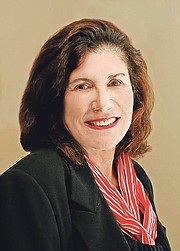By Diane Phillips
WHEN I wrote a column last week that started with the words - shame on me - I was fighting back tears. I am a Bahamian citizen and as guilty as every one of us who stands by and lets history crumble before our eyes. Earlier that day, I had stood in front of a building that once housed Pan American Airlines headquarters and realised, just as I had the Sunday before when a young friend and I pushed away the bush to get inside Blackbeard’s Tower, that we are letting our incredible history vanish piece by piece, decaying block by block, day by day.
The Pan Am headquarters building on East Bay Street and what is left of Blackbeard’s Tower off Eastern Road by Tower Heights are only structures. But our skin is only skin. Yet its job is essential. It is the outer layer that houses all the elements that make us human. It protects us because it saves what is inside.
History is often and too easily forgotten when it is not housed.
As time passes and we increasingly rely on the few lines we see online, the richness of our history will fade. The age of piracy in The Bahamas will be reduced to a Wikipedia reference and Pan American will be remembered as an airline that went out of business instead of the first to fly across the Pacific and Atlantic Oceans and the airline that gave birth to the tourism industry in The Bahamas.
The dangling parapet on the Pan Am building that thousands of vehicles pass every day seems symbolic, clinging on for dear life, supported by a single remaining column carrying all the weight, threatening, yet begging for rescue before it collapses. Thanks to Tribune Publisher Eileen Carron, the specifics of Pan Am’s operations take a more personal turn. It was one George Morley of Farnborough, Hampshire, England who came to The Bahamas at the age of 25 in 1926 to be a teacher, then Out Island Commissioner and later served as director of operations for Pan Am for 33 years, working out of that same building. The building was next to a ramp that served as the “runway” for Pan Am’s seaplanes. Morley had two sons, the youngest son, John, became a well-known businessman, one of the early presidents of the Bahamas Chamber of Commerce and both his widow, Diane Morley, and their daughter, Tara, are highly successful businesswomen and active in civic affairs. The original Morley, along with the founder of Pan Am Juan Trippe, deserve to be remembered. In Eleuthera, Trippe is still considered a legend and hero.
Structures like the Pan Am building and Blackbeard’s Tower house more than history. They house opportunity. The Pan Am building could easily become an aviation museum with a lively story of “Pappy” Chalk, Blackbeard’s Tower an attraction open on certain days and where those dressed in period costume put on a pirate’s demonstration complete with “swords”, treasure and accents of the day. Imagine the selfies from the top of the tower, or next to a pirate. If these monuments were in private sector hands or if the Historic Bahamas Foundation council were minimally funded and permitted to run with ideas, visitor fees would cover restoration and operational costs. More importantly, pieces of the history of The Bahamas would come alive with all the romance, honesty and tales that will never be repeated and should never be forgotten.






Comments
Use the comment form below to begin a discussion about this content.
Sign in to comment
OpenID